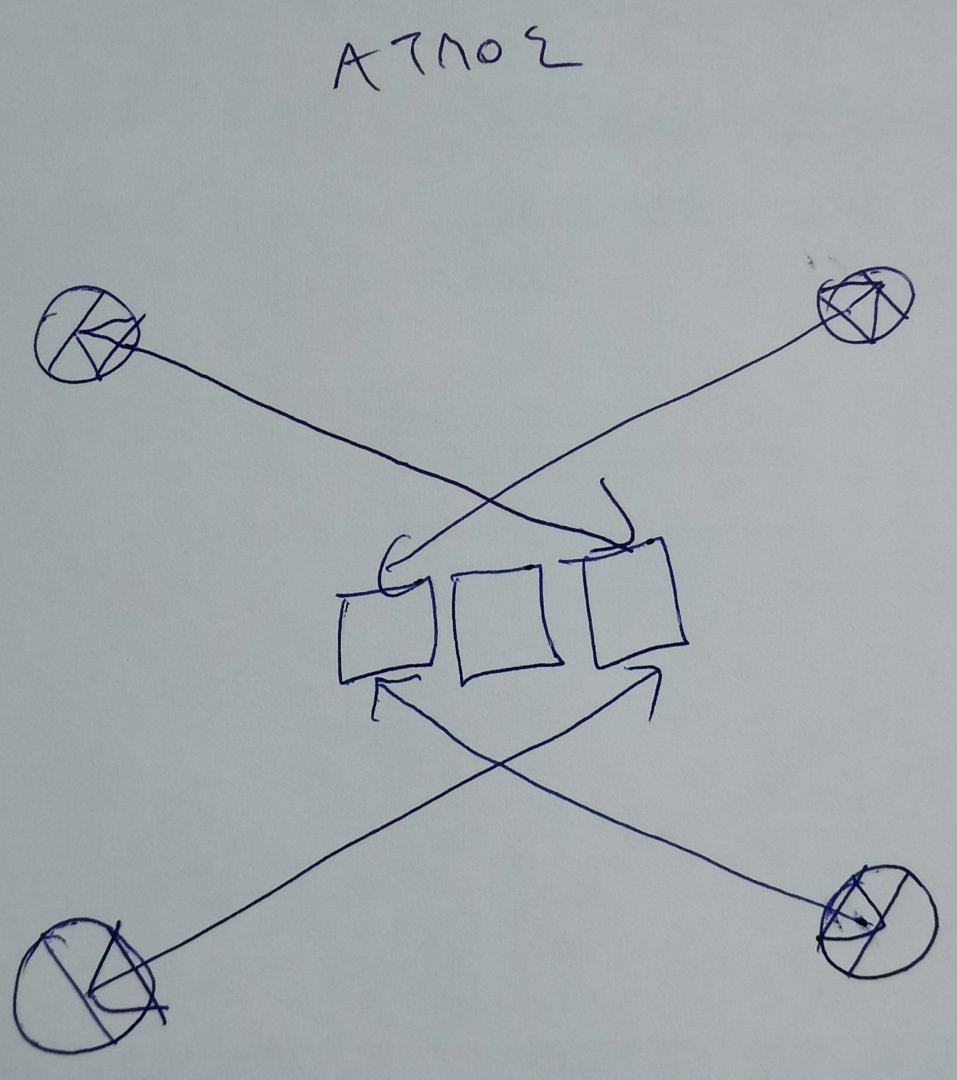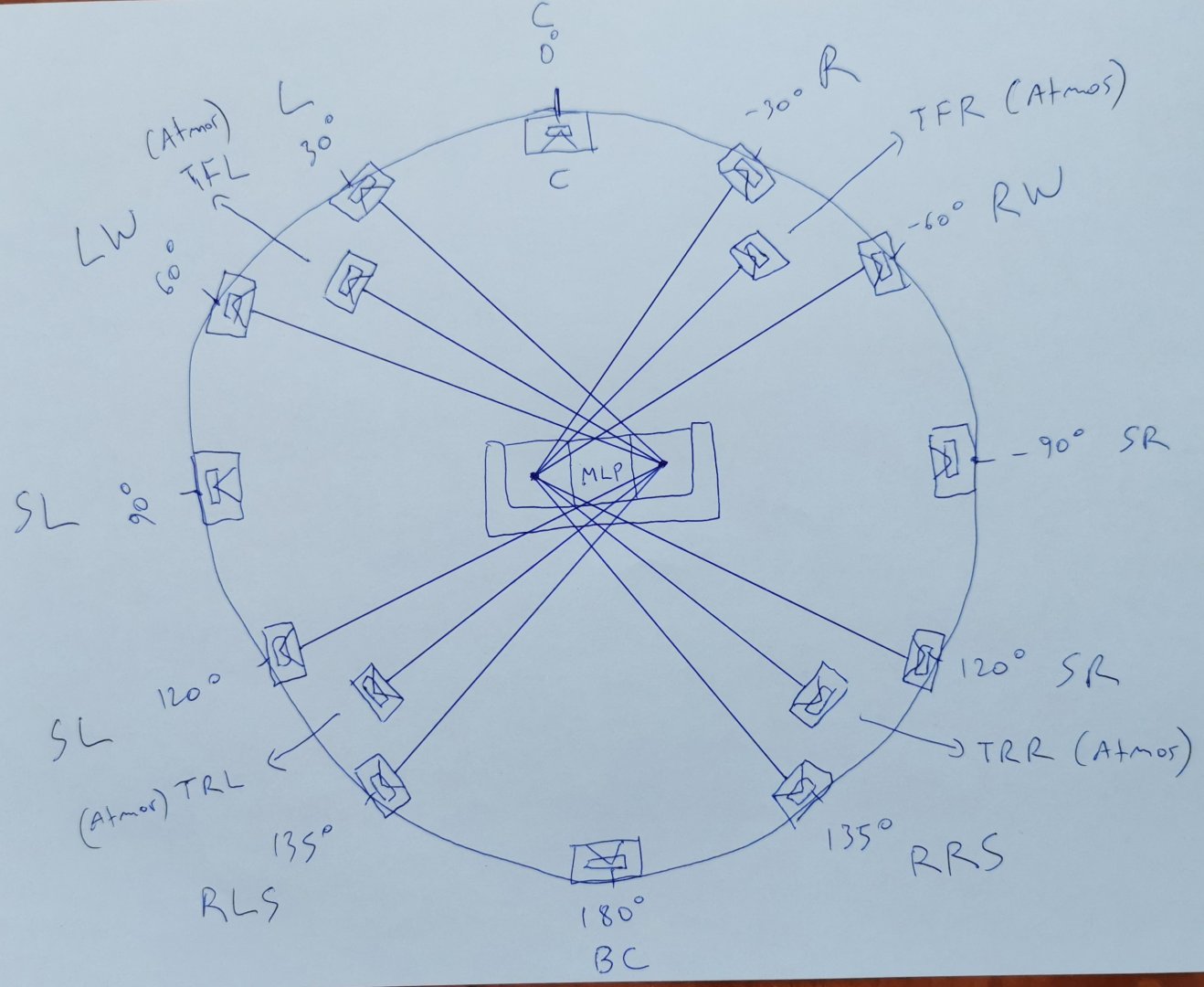wnet
Nearfield
- Μηνύματα
- 5.396
- Reaction score
- 18.613
...και παλι πολλά είναι ...άσε που λέει για πολυκαναλα...Στο πρώτο ποστ τούτου του θρεντ, έδωσα ένα πολύ χρήσιμο λινκ.
Προφανώς μόνο εγώ το έχω διαβάσει, και προφανώς βαργιέστε τα πιντιέφ
, αλλά έτσι, μπας και τσιγκλισω το ενδιαφέρον σας, αντιγράφω καναδυό παραγράφους:
Basic requirements of multichannel sound systems beyond the 5.1 sound system
The directional stability of the frontal sound image should be maintained over the entire
higher resolution imagery area. Coincidence of position between sound image and video
image also should be maintained over the wide imagery area.
Exceptional sound quality should be maintained over wider listening area than that
provided by current 5.1 channel sound system.
Basic requirements of the sound image
– The directional stability of the frontal sound image should be maintained over the entire
higher resolution imagery area. Coincidence of position between sound image and video
image also should be maintained over the wide imagery area.
Reason σε:
The following requirements are defined in Recommendation ITU-R BS.775 for the 5.1 channel
sound system:
– The directional stability of the frontal sound image shall be maintained within reasonable
limits over a listening area larger than that provided by a conventional two-channel
stereophony.
The following requirement is also defined:
– It is not required that the side/rear loudspeakers should be capable of the prescribed image
locations outside the range of the front loudspeakers.
For advanced multichannel sound systems beyond the 5.1 channel sound system, the reproduction
of the sound images should be improved from the following two aspects:
− The directional stability of the sound image come from all horizontal directions, i.e. the
front/back and left/right directions, should be maintained within reasonable limits over the
listening area.
− The sound image included in the elevation directions should also be reproduced.
In addition, considering advanced multichannel sound systems applied for television applications,
which have high-resolution imagery with a horizontally and vertically wide field of view, the
coincidence of the position between sound images and video images is needed over the entire
imagery area. Therefore, the aforementioned basic requirement 1) is defined.
.3 Basic requirement of listening area
– Exceptional sound quality should be maintained over wider listening area than that
provided by current 5.1 channel sound system.
Reason:
The following requirement is defined in Recommendation ITU-R BS.775 for the 5.1 channel sound
system:
– The directional stability of the frontal sound image shall be maintained within reasonable
limits over a listening area larger than that provided by a conventional two-channel
stereophony.
As frontal two (left and right) loudspeakers are placed for the conventional 2-channel sound system,
the listening area of the 5.1 channel sound system should be considered only for the frontal sound
image by comparing it to that of a conventional 2-channel stereophony.
To extend the basic requirement of the 5.1 channel sound system, the listening area of advanced
multichannel sound systems should be enlarged by comparing them to the 5.1 channel sound
system. Therefore, the aforementioned basic requirement 4) is defined.
Object-based multichannel audio system
This system was developed based on the principles of wave-field synthesis,
Figure 32 shows that, in the large theatre, the 22.2 multichannel sound system was rated
significantly better than the 5.1 channel sound system for the terms “gaudy”, “distinct”, “wide in
front and rear”, “wide in above and below”, “clear movement of sound”, “sound from every
direction”, “rich reverberant” and “rich envelopment”. Figure 33 shows that, in the small studio, the
22.2 multichannel sound system was rated significantly better than the 5.1 channel sound system for
every evaluation term except “loud”, “dynamic”, “gaudy” and “natural”. The results also show that
the 5.1 channel sound system was rated significantly better than the two-channel stereo system for
every term except “loud”. The results suggest that there was no difference in the loudness between
each system
Rep. ITU-R BS.2159-4 49
Attachment 1
Elevation perception of phantom sound images in the frontal hemisphere
System configuration for subjective evaluation experiments
Recommendation ITU-R BS.1909 (Annex 1, § 1.3) recommends the following sound quality
requirement:
– For applications with accompanying picture, the directional stability of the frontal sound
image should be maintained over the entire area of high-resolution large-screen digital
imagery. The coincidence of position between sound images and video images should also
be maintained over a wide image and listening area.
Subjective evaluation experiments were conducted with a vertical loudspeaker configuration to
investigate the number of audio channels required to reproduce vertically stable frontal sound
images.
Άντε, καλό διάβασμα. Όλο και κάτι θα κερδίσεις..
τιμή κ δόξα σε όσους αρκούνται σε μια σχετική τονική ισορροπία και λίγο δυνατουτσικη ένταση

βασικά το αντίθετο λέει ο Κωστής.... να "βγεις πιο έξω"Μετακινησα την θεση ακροασης 15 εκατοστα μεσα στο τριγωνο και διαπιστωσα βελτιωση σε πολλα επίπεδα.
Ισως αυτο οφείλεται στο οτι το κεφαλι μας εχει καποιο μεγεθος και ετσι τα αυτια μας βρισκονται on axis οταν η μυτη του τριγωνου στοχευει ακριβως πισω απο το κεφαλι μας και οχι αναμεσα στα ματια μας.
Βεβαια τις αλλαγες τις ακουω σε χωρο που εχει τις ακουστικες προδιαγραφες διεθνων standards, και με ενεργα ηχεια της ATC.
Δεν ξερω αν μπορει να το διαπιστωσει καποιος σε εναν χωρο μη ελεγχωμενης ακουστικης. Αλλα σιγουρα μπορει να το δοκιμασει και να εξαγει τα συμπερασματα του.
Επισυνάπτω το σχεδιο που εφτιαξα για οποιον δεν το αντιλαμβανεται ακριβως.
Last edited:






